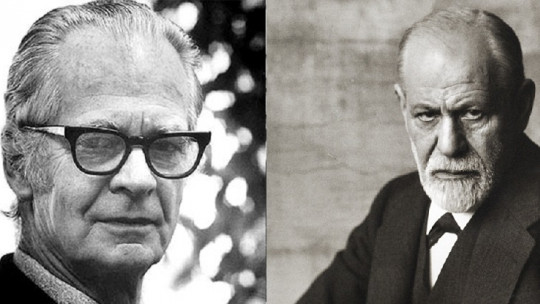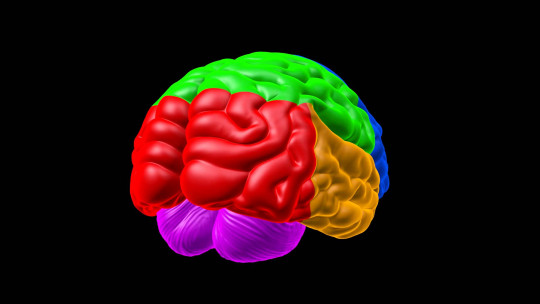
Human behavior is a phenomenon that since ancient times has been attempted to explain in many different ways. What is behind our behavior? Why do we behave the way we do? Psychology has often tried to answer these questions from different points of view.
One of the paradigms that has tried to explain it is behaviorism. And within this current, one of the best known approaches is Skinner’s radical behaviorism.
Behaviorism: basic premises of the paradigm
Behaviorism is a paradigm of psychology whose objective is to study behavior and the processes that elicit it, from an empirical and objective perspective. It is based on the premise that the mind and mental processes are concepts that cannot be objectified and it is not possible to study them scientifically, their only visible correlate being the behavior we carry out.
It is based on a mechanistic conception of behavior in which it is stipulated that it is the properties of the stimuli that make the subject, which is a passive and reactive being to said properties, respond in a certain way.
Furthermore, it is considered that the acquisition of behaviors and learning in general is carried out thanks to the ability to link and associate stimuli under certain circumstances that allow said association.
Is about conditioning processes in which exposure to stimuli occurs that generate a positive or negative response in the organism and other neutral ones, the subject relating both stimuli in such a way that it responds in the same way to the conditioned stimulus (the neutral one that ends up acquiring positive or negative characteristics due to its association with the initial stimulus) than before the appetitive or aversive element. Through different processes it is possible to cause stimuli to be associated or dissociated, something that has been used, for example, in the treatment of phobias.
Concepts such as will or other mental aspects and even the mind itself are not denied but are rather considered a consequence of stimulation and behavioral reaction instead of its cause. For the most part, then, the cause of the behavior is considered to be external.
Since the birth of behaviorism, this paradigm has been evolving, different types of behaviorism emerging. But one of those that has had the most interest and importance, along with the classic one, is radical behaviorism.
Skinner’s perspective: radical behaviorism
Radical behaviorism is one of the main theoretical developments of behaviorism, from which different neobehaviorist currents have emerged. Radical behaviorism considers that, although classical conditioning (also called responder) is a valid explanation to understand reactions to a specific stimulus, it is not sufficient to explain our behavior with respect to it.
That is why BF Skinner, the main author and developer of this type of behaviorism, considered and defended that human behavior was not caused solely by the stimulus-response association but that the root of behavior is found in the effect or consequences that the actions themselves have on ourselves. The mind and intellectual processes are considered as existing elements, but they do not explain behavior and their study is unproductive. In any case, Thinking could be defined as verbal behavior derived from the same principles of conditioning.
For Skinner and radical behaviorism, behavior and its persistence or modification depend on what it can cause. If a behavior has favorable consequences for us, we will tend to repeat it often so that we obtain the benefit in question more frequently. If, on the other hand, the behavior results in us suffering harm, we will do it less frequently or inhibit it.
The association between the behavior and its consequences is what is called operant conditioning, and the stimuli that make us repeat the behavior or not, the reinforcers (which can be of different types). It is in this type of thinking that concepts such as reinforcement and punishment arise, which would later be applied in different techniques.
Some limitations
The contribution of radical behaviorism has been essential in the development of the scientific study of behavior. However, this perspective has the drawback that at least originally does not take into account other factors such as motivation, emotions the intelligence or personality of the subject.
It is because of these and other limitations that different neobehaviorist approaches would end up emerging that do take them into account and even one of the reasons why the behaviorist and cognitivist lines would end up coming together in the cognitive-behavioral paradigm.
Applications of radical behaviorism
Radical behaviorism has been an approach in the study of behavior with great importance and presence in different areas, including clinical and educational settings.
The idea that behavior depends on its consequences and that it can be modified through the use of programs in which certain behaviors are reinforced or punished has allowed the generation of techniques that continue to be used today, although they have been developed and incorporated concepts from other paradigms such as cognitivist. These are behavior modification techniques, with operant techniques being especially linked to radical behaviorism.
Reinforcement and punishment Both positive and negative are the most basic and are a fundamental part of most of the others. In reinforcement, the repetition or acquisition of a behavior is caused either because an appetitive stimulus is provided or an aversive stimulus is removed, while in punishment a behavior is decreased or eliminated through the appearance of aversive stimuli or the withdrawal of reinforcers.
Regarding the concepts of positive and negative, positive is understood as that in which a stimulus is added and negative in which it is removed. Other derived techniques are those of shaping or chaining to learn how to perform behaviors, as well as fading and aversive techniques.
These types of techniques have been used in order to help reduce problematic behaviors and promote more adaptive ones. They are usually applied to behavioral problems, in children and adults, and in some learning processes in which new behaviors have to be developed or existing ones modified.
Despite this, the fact of not taking into account aspects such as mental processes has caused its usefulness to be limited and even in some cases to have undesired effects. It is necessary to integrate cognitive aspects in the treatment of problems such as depression or learning problems.








